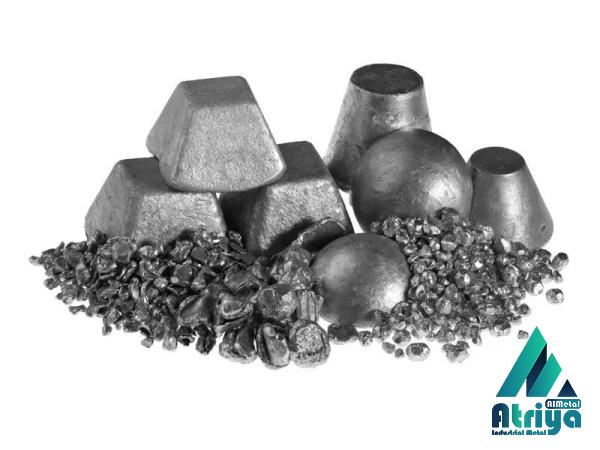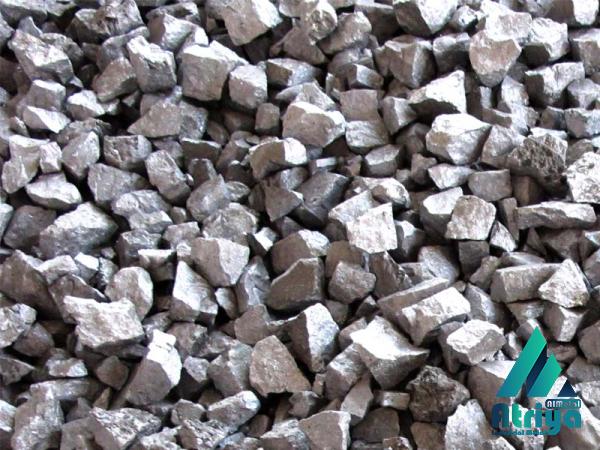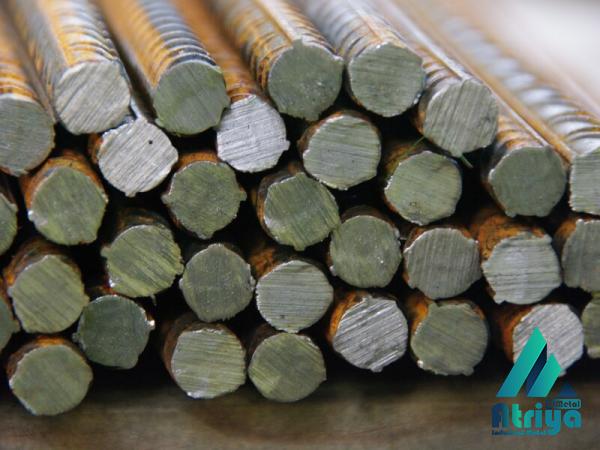Cast iron mill scale is a flaky residue that forms on the outer surface of cast iron products during production processes. It is primarily composed of iron oxides, with a varying amount of impurities such as carbon, silicon, sulfur, and manganese. While some may view mill scale as a waste material, it holds substantial potential for various industrial applications, especially in metallurgy, construction, and manufacturing sectors. This summary will delve into the characteristics and properties of cast iron mill scale, exploring its formation, composition, and uses. We will examine its significance as a raw material in different industries, discuss the methods of processing and utilization, and explore the environmental considerations associated with its use. 1. Formation and Composition Cast iron mill scale is formed through the oxidation of the iron surface during iron or steel production processes. It occurs when the metal comes into contact with oxygen and moisture, leading to the formation of iron oxides. Mill scale is typically blackish or bluish in color, and its formation is influenced by factors such as temperature, carbon content, and the presence of other elements. The composition of cast iron mill scale primarily consists of iron oxides, namely magnetite (Fe3O4) and hematite (Fe2O3), along with impurities like carbon, silicon, sulfur, and manganese. The proportion of these elements varies depending on the specific production process and the quality of the iron or steel being processed.
iron
 2. Uses of Cast Iron Mill Scale Despite being considered a byproduct, cast iron mill scale has numerous applications due to its unique properties. Some of the key uses include: a) Iron and Steel Production: Mill scale can be recycled and reintroduced into the iron and steel production process as a ferrous oxide source. It acts as a raw material in the production of industrial-grade iron and steel products, enabling resource conservation and cost savings. b) Construction Industry: The iron oxide content in mill scale makes it suitable for use as an additive in concrete and cement. It enhances the binding properties of these materials, improves durability, and reduces water absorption. Additionally, mill scale can be used in the production of bricks, tiles, and lightweight aggregates, providing strength and texture to construction materials. c) Abrasives and Polishing: Mill scale, when properly prepared, can be used as a natural abrasive for surface preparation and cleaning. It finds application in the removal of rust, old paint coatings, and other surface contaminants.
2. Uses of Cast Iron Mill Scale Despite being considered a byproduct, cast iron mill scale has numerous applications due to its unique properties. Some of the key uses include: a) Iron and Steel Production: Mill scale can be recycled and reintroduced into the iron and steel production process as a ferrous oxide source. It acts as a raw material in the production of industrial-grade iron and steel products, enabling resource conservation and cost savings. b) Construction Industry: The iron oxide content in mill scale makes it suitable for use as an additive in concrete and cement. It enhances the binding properties of these materials, improves durability, and reduces water absorption. Additionally, mill scale can be used in the production of bricks, tiles, and lightweight aggregates, providing strength and texture to construction materials. c) Abrasives and Polishing: Mill scale, when properly prepared, can be used as a natural abrasive for surface preparation and cleaning. It finds application in the removal of rust, old paint coatings, and other surface contaminants.
Specifications of iron
 Mill scale’s hardness and friability make it an effective material for abrasive blasting, creating a cleaning effect without damaging the underlying substrate. d) Metallurgical Processes: While its impurities limit its suitability for use in high-quality steel production, mill scale can be utilized in certain metallurgical processes. It can contribute to the production of low-carbon steel alloys, cast iron, and iron sintering. Additionally, mill scale can be reduced to metallic iron or iron powder through suitable reduction processes. 3. Processing and Utilization To harness the potential of cast iron mill scale, it often undergoes processing and treatment before use. Some common methods of processing include: a) Sieving and Screening: Mill scale can be sieved or screened to remove oversized particles and obtain a uniform size distribution, ensuring better consistency in subsequent applications. b) Washing and Drying: Thoroughly washing and drying mill scale helps remove impurities, such as oils, grease, or water-soluble contaminants. This step enhances its compatibility with specific applications and prevents unwanted reactions during processing. c) Magnetic Separation: Magnetic separation is employed to separate iron-rich particles from the rest of the mill scale. This process facilitates the recovery of pure iron oxide, which can be used in various applications or reintroduced into the iron and steel production process. d) Grinding and Milling: Mill scale can undergo grinding or milling to reduce particle size, increase surface area, and improve its reactivity. This process enhances the material’s suitability for use in construction products, abrasives, or other specialized applications. 4. Environmental Considerations While cast iron mill scale possesses valuable properties for various applications, it is crucial to consider its environmental impact.
Mill scale’s hardness and friability make it an effective material for abrasive blasting, creating a cleaning effect without damaging the underlying substrate. d) Metallurgical Processes: While its impurities limit its suitability for use in high-quality steel production, mill scale can be utilized in certain metallurgical processes. It can contribute to the production of low-carbon steel alloys, cast iron, and iron sintering. Additionally, mill scale can be reduced to metallic iron or iron powder through suitable reduction processes. 3. Processing and Utilization To harness the potential of cast iron mill scale, it often undergoes processing and treatment before use. Some common methods of processing include: a) Sieving and Screening: Mill scale can be sieved or screened to remove oversized particles and obtain a uniform size distribution, ensuring better consistency in subsequent applications. b) Washing and Drying: Thoroughly washing and drying mill scale helps remove impurities, such as oils, grease, or water-soluble contaminants. This step enhances its compatibility with specific applications and prevents unwanted reactions during processing. c) Magnetic Separation: Magnetic separation is employed to separate iron-rich particles from the rest of the mill scale. This process facilitates the recovery of pure iron oxide, which can be used in various applications or reintroduced into the iron and steel production process. d) Grinding and Milling: Mill scale can undergo grinding or milling to reduce particle size, increase surface area, and improve its reactivity. This process enhances the material’s suitability for use in construction products, abrasives, or other specialized applications. 4. Environmental Considerations While cast iron mill scale possesses valuable properties for various applications, it is crucial to consider its environmental impact.
buy iron
 Mill scale may contain trace amounts of heavy metals, such as lead, chromium, or cadmium, as well as other hazardous substances. Appropriate handling, processing, and disposal measures should be implemented to prevent pollution. Recycling and reusing mill scale can significantly reduce the environmental impact associated with its disposal. By incorporating mill scale back into the iron and steel production process, industries can minimize waste generation, conserve natural resources, and reduce energy consumption. However, it is essential to ensure proper handling, storage, and transportation of mill scale to prevent environmental contamination during the processing and utilization stages. Adequate safety measures should be implemented to protect workers and the environment from potential risks associated with its handling and processing. In conclusion, cast iron mill scale, a byproduct of iron and steel production, offers various valuable applications. Its composition and properties make it suitable for use in industries such as construction, metallurgy, and manufacturing. By employing appropriate processing methods, mill scale can be transformed into a resource, contributing to sustainability and cost-efficiency. However, it is crucial to manage its environmental impact through responsible handling and adherence to safety protocols.
Mill scale may contain trace amounts of heavy metals, such as lead, chromium, or cadmium, as well as other hazardous substances. Appropriate handling, processing, and disposal measures should be implemented to prevent pollution. Recycling and reusing mill scale can significantly reduce the environmental impact associated with its disposal. By incorporating mill scale back into the iron and steel production process, industries can minimize waste generation, conserve natural resources, and reduce energy consumption. However, it is essential to ensure proper handling, storage, and transportation of mill scale to prevent environmental contamination during the processing and utilization stages. Adequate safety measures should be implemented to protect workers and the environment from potential risks associated with its handling and processing. In conclusion, cast iron mill scale, a byproduct of iron and steel production, offers various valuable applications. Its composition and properties make it suitable for use in industries such as construction, metallurgy, and manufacturing. By employing appropriate processing methods, mill scale can be transformed into a resource, contributing to sustainability and cost-efficiency. However, it is crucial to manage its environmental impact through responsible handling and adherence to safety protocols.











Your comment submitted.